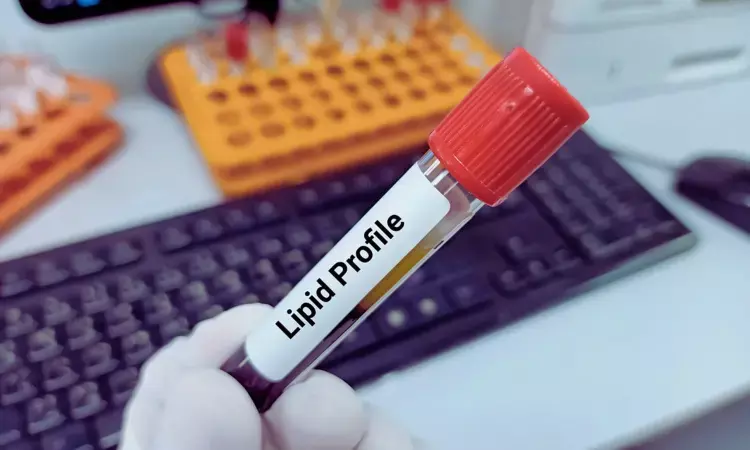- Home
- Medical news & Guidelines
- Anesthesiology
- Cardiology and CTVS
- Critical Care
- Dentistry
- Dermatology
- Diabetes and Endocrinology
- ENT
- Gastroenterology
- Medicine
- Nephrology
- Neurology
- Obstretics-Gynaecology
- Oncology
- Ophthalmology
- Orthopaedics
- Pediatrics-Neonatology
- Psychiatry
- Pulmonology
- Radiology
- Surgery
- Urology
- Laboratory Medicine
- Diet
- Nursing
- Paramedical
- Physiotherapy
- Health news
- Fact Check
- Bone Health Fact Check
- Brain Health Fact Check
- Cancer Related Fact Check
- Child Care Fact Check
- Dental and oral health fact check
- Diabetes and metabolic health fact check
- Diet and Nutrition Fact Check
- Eye and ENT Care Fact Check
- Fitness fact check
- Gut health fact check
- Heart health fact check
- Kidney health fact check
- Medical education fact check
- Men's health fact check
- Respiratory fact check
- Skin and hair care fact check
- Vaccine and Immunization fact check
- Women's health fact check
- AYUSH
- State News
- Andaman and Nicobar Islands
- Andhra Pradesh
- Arunachal Pradesh
- Assam
- Bihar
- Chandigarh
- Chattisgarh
- Dadra and Nagar Haveli
- Daman and Diu
- Delhi
- Goa
- Gujarat
- Haryana
- Himachal Pradesh
- Jammu & Kashmir
- Jharkhand
- Karnataka
- Kerala
- Ladakh
- Lakshadweep
- Madhya Pradesh
- Maharashtra
- Manipur
- Meghalaya
- Mizoram
- Nagaland
- Odisha
- Puducherry
- Punjab
- Rajasthan
- Sikkim
- Tamil Nadu
- Telangana
- Tripura
- Uttar Pradesh
- Uttrakhand
- West Bengal
- Medical Education
- Industry
Lipid Accumulation Product Superior Predictor of Gout and Hyperuricemia Risk, reports research

Researchers have revealed in a new study that the Lipid Accumulation Product (LAP)-a combination of waist circumference and fasting triglyceride levels-is a better indicator of obesity-related health risks than BMI or waist circumference alone. LAP shows high potential in predicting the risk of gout and hyperuricemia, presenting a modifiable factor for prevention. This study was conducted by Dexian X. and fellow researchers and was published in PLOS One journal.
The study employed data from 10,871 adults who underwent the National Health and Nutrition Examination Survey (NHANES) from 2009 to 2018. Subjects reported by themselves their gout status, and hyperuricemia was ascertained using laboratory uric acid results. Each subject had the lipid accumulation product calculated using waist circumference and fasting levels of triglycerides to estimate visceral fat accumulation.
Multivariate logistic regression analysis estimated odds ratios (OR) for gout and hyperuricemia by LAP quartiles. Restricted cubic spline (RCS) modeling also examined dose-response and possible non-linear effects between LAP and these outcomes. Trends across LAP quartiles were estimated using P-trend tests.
Results
• Prevalence of hyperuricemia was 20.9% among the 10,871 adults in the study, and gout occurred in 5.57% of participants.
• After controlling for possible confounders, patients in the top LAP quartile had 271% increased risk of hyperuricemia as compared to the bottom quartile (OR = 3.711, 95% confidence interval [CI] 2.732–5.042, p < 0.001).
• While LAP was treated as a continuous variable, a linear association with risk of hyperuricemia was noted (OR = 2.441, 95% CI 1.348–4.42, p = 0.005).
• Both analyses indicated strong trends (p for trend < 0.001).
These findings support the position of visceral fat deposition, as reflected by LAP, as a central metabolic risk factor for gout and hyperuricemia. The high degree of correlation indicates that LAP may serve as an accessible clinical marker for the identification of high-risk individuals for developing these disorders. Since LAP is simple to compute from standard measurements, it provides an effective tool for risk screening in heterogeneous groups.
This research proved that the lipid accumulation product is a useful predictor of risk of gout and hyperuricemia. Management of the extent of visceral fat accumulation could provide a promising entry point for prevention and control of these conditions. These results indicate that LAP should be a significant marker in metabolic health evaluations targeted at lowering gout and hyperuricemia prevalence.
Reference:
Xian, D., Wang, W., Li, H., Song, G., Xu, D., Zhang, F., Wang, Z., Xu, W., Meng, H., & Peng, M. (2025). Lipid accumulation product: A novel marker for gout and hyperuricemia. PloS One, 20(5), e0324139. https://doi.org/10.1371/journal.pone.0324139
Dr Riya Dave has completed dentistry from Gujarat University in 2022. She is a dentist and accomplished medical and scientific writer known for her commitment to bridging the gap between clinical expertise and accessible healthcare information. She has been actively involved in writing blogs related to health and wellness.
Dr Kamal Kant Kohli-MBBS, DTCD- a chest specialist with more than 30 years of practice and a flair for writing clinical articles, Dr Kamal Kant Kohli joined Medical Dialogues as a Chief Editor of Medical News. Besides writing articles, as an editor, he proofreads and verifies all the medical content published on Medical Dialogues including those coming from journals, studies,medical conferences,guidelines etc. Email: drkohli@medicaldialogues.in. Contact no. 011-43720751


